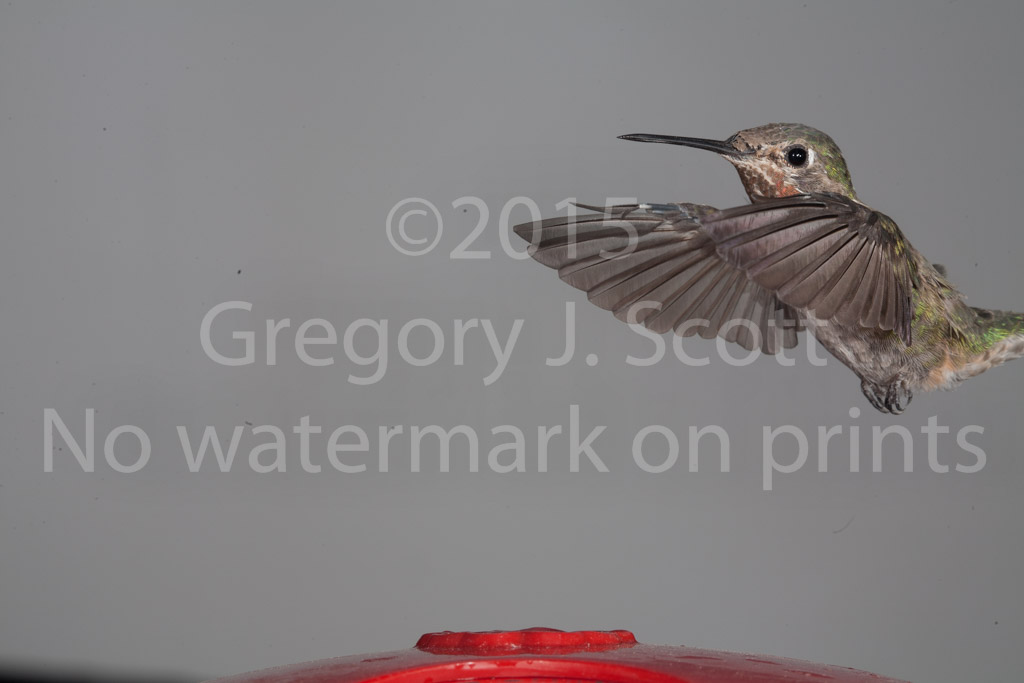One Hour of Unedited Hummingbird Photography: Technique and Methods
Click the large image once to see it larger, and click yet again to see it at FULL resolution! But don't forget to read the caption UNDER is page to get all the technical info.
Chopped of the tail. Oops. But you need to be as close as you can for the best resolution.

As a rule of thumb, you want to lose a fair percentage, maybe up to 50% of your shots, in order to be as close as possible, so that the shots that actually in frame are very close up and high resolution. It's a very subjective decision, and the optimal choice for the best shot percentage can vary with the average behavior of the individual bird, species, or general population that is visiting your feeder, and your target objective for what bird you are trying to get. In this case, my target bird is a Lucifer Male, who has not visited continually, but who is appearing perhaps every 20 minutes to an hour. For this reason, I am focused more toward the feeder/feeding position than I might normally do, since I don't know the bird's typical hover/rest position, and know he will feed, but not where and if he will hover. My strategy is to trigger the shot when he is feeding, and hope that my slow reflexes will catch him as he departs and/or hovers. The strategy wasn't really optimal, but I lucked out on the target species shot of the hour, as you will see.)